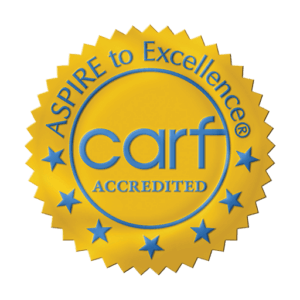Cognitive dissonance is a big psychology term, but it basically means a conflict between a person’s belief and the opposing desire for something. Conflict resolution in the mind looks a lot like wrestling with how to resolve the conflict in a peaceful way within the mind and have peace in the body. Learning to do this takes time but it can be possible to work through it and find hope in recovery.
Role of Addiction
The opposite of dissonance is consonance or a resolution to the perception of reality. Someone who spirals down into addiction knows what they are doing is harmful in some ways but continues to do it because of how the brain and body become used to the substances. They like the feeling it gives them, they might enjoy the company they keep while using substances, and, ultimately, they construct a world that works for them.
It is easier to block out the behavior and justify it. The logic of addiction only holds up in light of spinning a web of deceit, lies, and justifications to keep it going. The natural consequences of their behavior are not their fault and cannot be seen as bad in the eyes of someone who struggles with cognitive dissonance. In essence, it is a disconnect that has to be re-evaluated to begin recovery.
How Cognitive Dissonance Works
People with addiction and cognitive dissonance as a mode of thinking will increase delusional thinking to protect the addiction. Their beliefs and ideas are irrational to others but seemingly normal to themselves. When asked why they do it, they always have an answer. They would rather try to make sense of their own world than try to fit into the world at large. Some examples to consider:
- What they do is interesting but other people are boring
- Dangers of substance use are not realistic because they have not fully experienced the consequences
- Substance use makes life interesting since nothing else they have going on is interesting to them
- Not using substances will be boring and uninteresting
Defense mechanisms that keep people in addiction also keep cognitive dissonance working for them. They have to hit a very deep and heavy bottom space to break through the denial and see reality. It can be very difficult to embrace the idea they have let others down and let themselves go so far down. This may be necessary in order to heal.
Healing in Recovery
For people with substance abuse, they have to push past constant dissonance because they know there is dangerous stuff happening. Their brains are not being allowed to embrace the full depth. The person in recovery who sees things for what they are is able to work towards healing. Different therapeutic methods will help people in treatment move forward.
Group therapy, individual work, and building relationships with others who help fight that dissonance are helpful. A holistic approach can be helpful for mind-body-spirit connection, which builds bridges of understanding and helps the process feel more ingrained over time. Recovery is for a lifetime so it helps to have strong connections to a sober community that supports long-term recovery goals.
Alta Loma wants to see you succeed and find healing in recovery. If you are struggling with your journey of healing, we can help. Call us to find out why we offer the best programs at supporting your mental health and addiction recovery: 866-457-3843.






